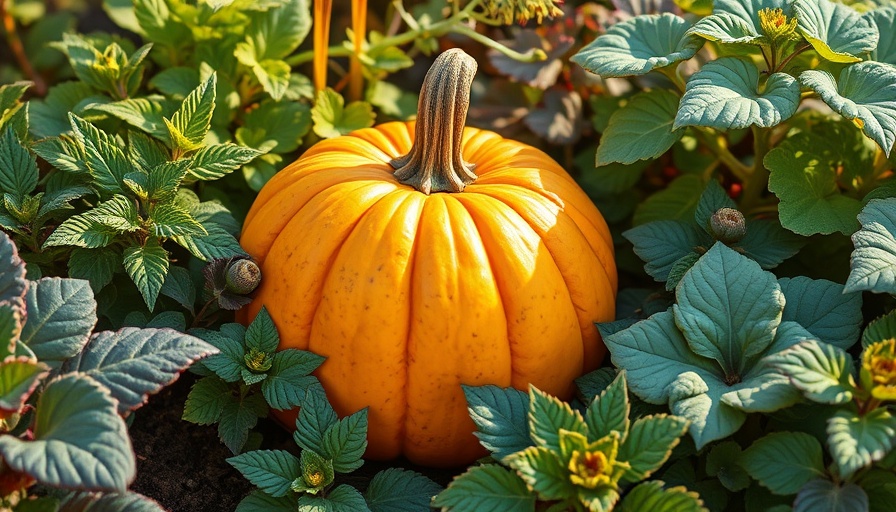
Why Grow Pumpkins with Friends?
Pumpkins are not merely stunning fall decorations; they’re also a fascinating challenge for any garden enthusiast. These vibrant gourds thrive not just on their own, but flourish alongside specific companion plants that provide incredible benefits. By growing pumpkins with the right friends, you’ll not only help your garden look its best, but you’ll also create a healthy ecosystem right in your backyard.
Top Companion Plants for Pumpkins
So, which plants should accompany our beloved pumpkins? Here are some of the best picks that can complement and enhance pumpkin growth:
- Corn: Corn towers over pumpkins, providing natural shade which can help keep the soil moist and cool.
- Korean Licorice Mint: This aromatic herb repels pests while attracting pollinators, creating a friendly environment for your pumpkins.
- Lavender: Not only does lavender add beauty with its purple blooms, but it also deters pests like aphids and moths, making it a fragrant companion.
- Marigolds: These colorful flowers aren’t just pretty; they are powerful pest deterrents that can protect your pumpkins from pests like nematodes.
- Marjoram: This herb is great for improving the flavor of nearby plants while attracting beneficial insects that prey on common pests.
- Nasturtiums: A favorite trap crop, nasturtiums draw aphids away from your pumpkins, saving the main crop.
- Pole Beans: These legumes not only fix nitrogen in the soil but also offer additional structure for pumpkins to climb.
- Sunflowers: Tall sunflowers can provide shade and attract bees, which promote pollination and growth.
What to Avoid Planting with Pumpkins
While many plants make great companions for pumpkins, some can hinder their growth. Avoid planting them with:
- Potatoes: Both plants compete for nutrients, which can stunt their growth.
- Other Cucurbits: Squash, cucumbers, and melons can attract similar pests that may lead to an infestation.
The Benefits of Companion Planting
Companion planting is about more than just aesthetics; it’s a strategic gardening practice. By growing various plants together, you can:
- Maximize Space: Tall corn provides vertical space, allowing pumpkin vines to spread without competing for ground.
- Reduce Pest Attraction: Diverse planting confuses pests and attracts beneficial insects that feed on them, leading to a healthier crop overall.
- Improve Soil Health: Planting legumes improves nitrogen levels in the soil, which is vital for nutrient-hungry pumpkins.
- Encourage Biodiversity: A diverse garden attracts a variety of pollinators and beneficial insects, enhancing your garden's ecosystem.
Practical Gardening Tips for Pumpkin Success
To make the most of your pumpkin companion planting, consider these practical tips:
- Start Early: Begin planting companion plants a week or two before you sow your pumpkin seeds to ensure they’re established by the time the pumpkins germinate.
- Rotate Crops: Practice crop rotation yearly to replenish soil nutrients and reduce pest buildup, contributing to overall plant health.
- Use Organic Practices: Consider organic fertilizers and compost to nurture your garden while keeping it safe for wildlife.
- Consider Light and Space: Make sure taller companions are planted where they won't block sun access to shorter plants like pumpkins.
Transform Your Backyard Garden
With the right companion plants by their side, your pumpkins can thrive better than ever. Don’t just think of your garden as a space for cliches; treat it as a sanctuary where plants collaborate to flourish. Designing your garden with companion planting can lead to beauty and bounty!
If you’re excited to enhance your pumpkin gardening experience, put these tips to action and watch as your garden transforms into a vibrant community of plants!
 Add Row
Add Row  Add
Add 




Write A Comment